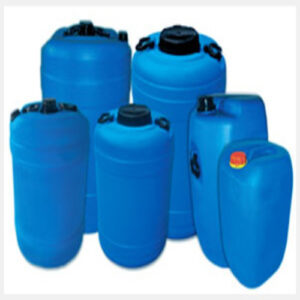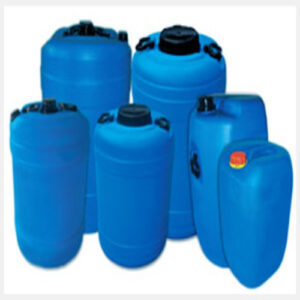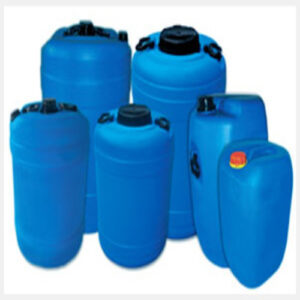Textile Dyeing Chemical – Excellent dispersing agent, protective colloid and complexing agent for use in dyeing processes for cotton and its blends.
Chemical Nature : Acrylic Copolymer
Features
- Clear, colourless to light yellow viscous liquid, pourable, miscible with water in all proportions.
- Resistant to acids, alkalis and electrolytes.
- Compatible with anionic and non-ionic products.
- No precipitation occurs in alkaline solutions.
- Precipitation may occur if applied with cationic products in neutral or acidic pH.
- Low-foaming and has no affinity for anionic dyes.
- Has a moderate complexing effect on metal ions.
- Suitable for caustic scouring and peroxide bleaching.
Benefits
- Does not affect the shade and fastness of textiles, dyed with reactive or direct dyes that contain metals.
- Has a very pronounced dispersing effect on insoluble and slightly soluble calcium salts, waxes and pectinates and precipitated solids caused by hard water.
- Prevents calcium and magnesium ions from impairing the solubility of anionic dyes and their affinity for cotton.
- Improves the rub fastness and brightness of dyed yarn and fabric.
- Protects against magnesium and calcium salt deposits.
- Improves handle thus enhancing winding and sewing properties.
- No de-metallizing effect on dyestuffs.
- Improves penetration and distribution of the dye liquor, leading to better levelling.
- Prevents hydrolyzed reactive dyes from forming calcium salts, which are difficult to wash out in hard water.
Ecology
Easy to remove from waste water in biological effluent treatment plants. It is free of phosphates and alkylphenol ethoxylates and does not make any contribution to the AOX of the waste water. Does not contain Phosphorous.
Storage
This textile dyeing chemical has a shelf life of at least one year if stored in its tightly sealed original packaging at temperatures between 5 °C and 35 °C. Drums should be tightly resealed each time material is taken from them and their contents should be used up as soon as possible after they have been opened.
Properties
Appearance: Clear colorless to light yellow viscous liquid
Solubility: Miscible with water in all proportions
pH: 7.0 – 8.5
Density: 1.20 g/cm³
Stability
- Leomine Disperse WAS is resistant to acids, alkalis and electrolytes at the concentrations at which they are usually employed in the dyeing process.
Compatibility
This textile dyeing chemical is compatible with anionic and non-ionic products, but precipitation can occur if it is applied at the same time with cationic auxiliaries in acidic or neutral solutions. No precipitation occurs in alkaline solutions.
Application
This textile dyeing chemical can be used in a variety of applications at all stages of dyeing processes for cotton and blends of cotton and other fibres.
Continuous Process
Recommended dosage : 1 – 2.5 g/l of Leomine Disperse WAS to the padding liquor
Dyeing cotton with reactive & direct dyes
Hard water can cause calcium carbonate to precipitate when raw cotton is dyed with reactive or direct dyes. Leomine Disperse WAS has a high dispersing action on calcium salts which ensures that the calcium carbonate that forms during the dyeing process is kept finely dispersed. Leomine Disperse WAS also reduces the extent to which hydrolyzed reactive dyes are able to form calcium salts, which are difficult to wash out. Leomine Disperse WAS does attack metal complex dyes, and it has no detrimental effect on their shade or fastness. This is an advantage over other strong chelating agents.
Recommended dosage : 1-4 g/l Leomine Disperse WAS
Washing-Off Reactive Dyes
- In the soaping bath, Leomine Disperse WAS prevents formation of hydrolysed dye complex. It also prevents aggregation of hydrolysed dyes and prevents re-deposition of hydrolysed dye on to the fabric leading to level dyeing.
- In the case of very heavy shades, it is recommended to treat with Leomine Disperse WAS twice at the boil with 1 g/l for 10 minutes, changing the bath in-between. This will result in better fastness.
Recommended dosage : 1-2.5 g/l Leomine Disperse WAS
Dyeing cotton with Vat dyes
High levels of Calcium and Magnesium ions in raw cotton react with Vat dyes causing them to precipitate. Leomine Disperse WAS eliminates such precipitation. A chelating agent having higher complexing power should be added along with Leomine Disperse WAS if water hardness is greater then 107 mg Calcium/litre.
Recommended dosage : 1-4 g/l Leomine Disperse WAS, before alkali addition
Dyeing Polyester-cotton blends
When Polyester component of the blend is dyed first, impurities released from cotton fibers cause Vat and Reactive dyes to precipitate in alkaline medium. In wound packages these problems are pronounced due to filtration effect. Leomine Disperse WAS prevents such precipitation leading to level dyeing.
Recommended dosage : 1-2.5 g/l Leomine Disperse WAS, at the beginning of dyeing process.
Safety
When using this product, the information and advice given in our Material Safety Data Sheet should be observed. Due attention should also be given to the precautions necessary for handling chemicals.







There are no reviews yet.